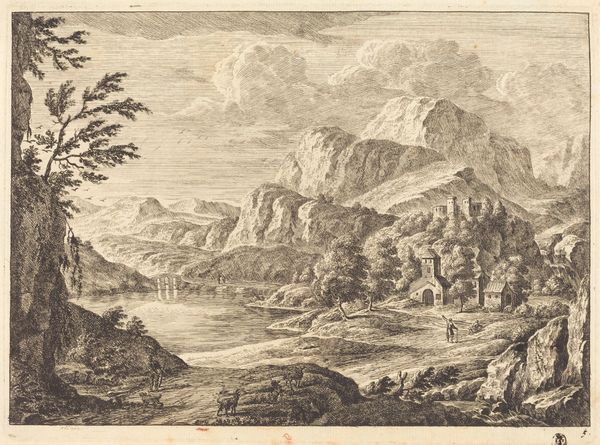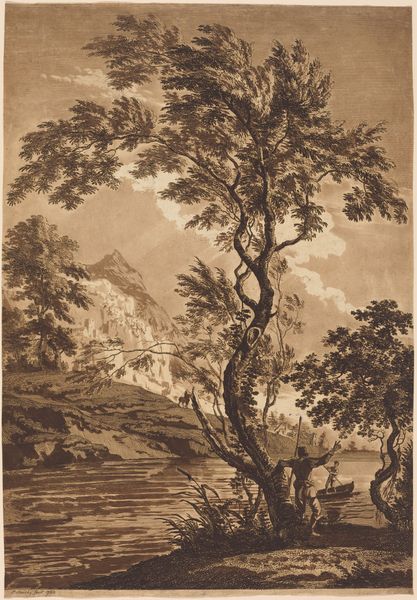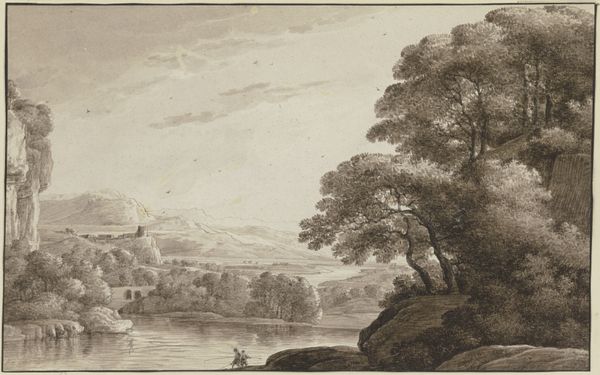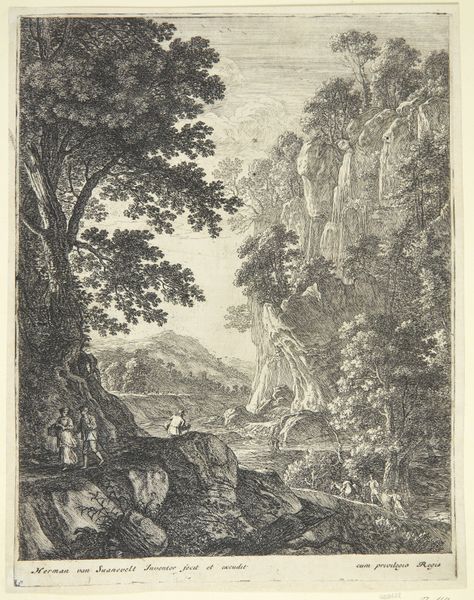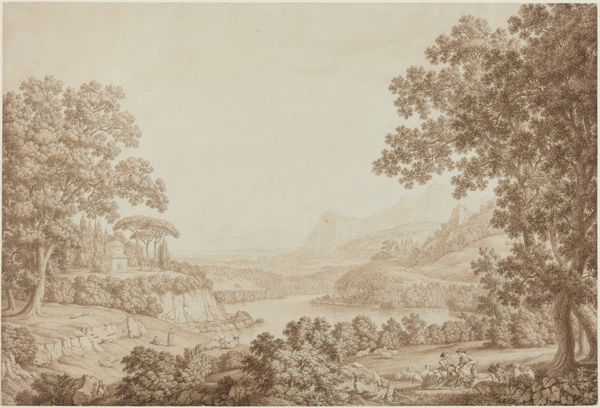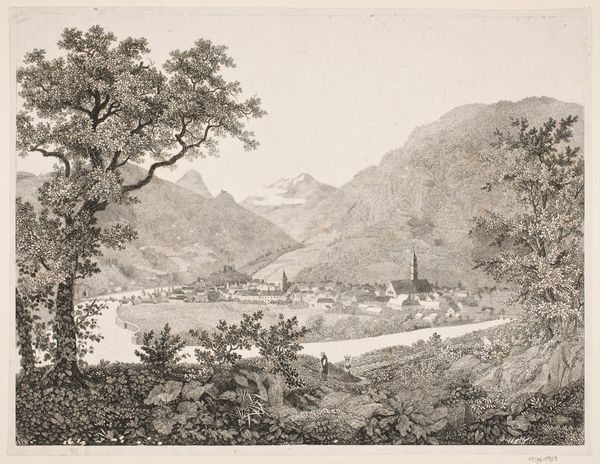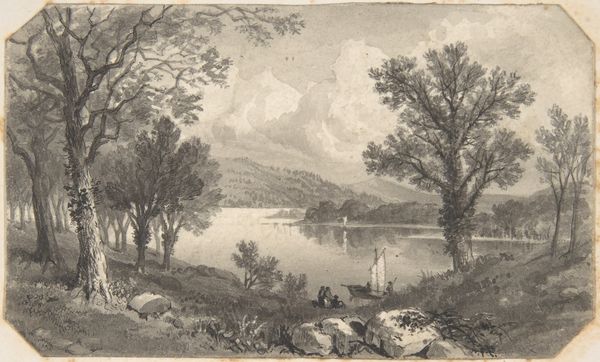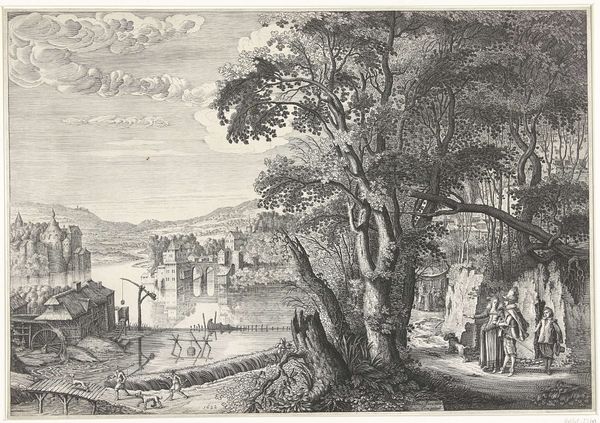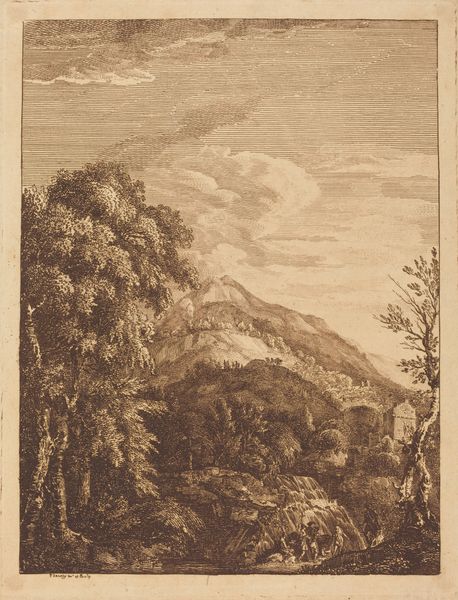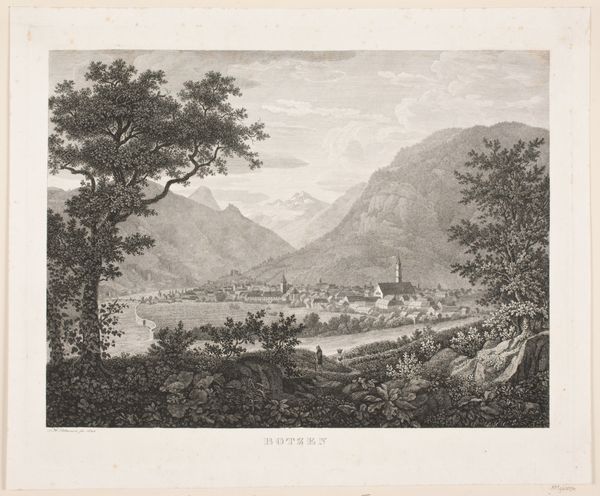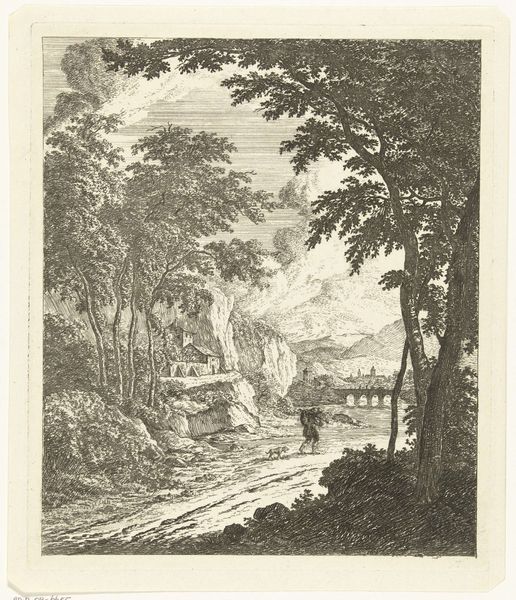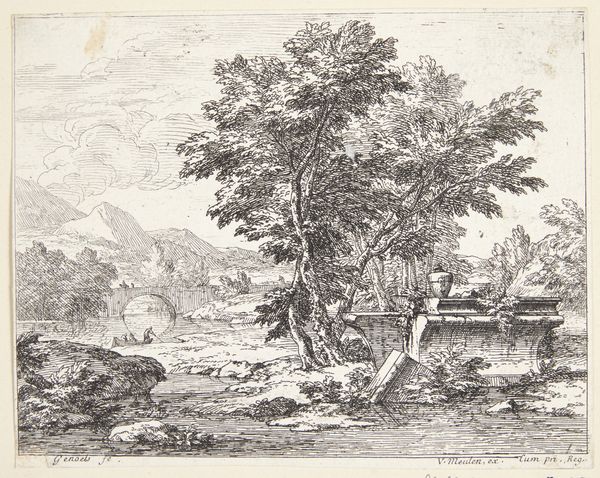
Copyright: National Gallery of Art: CC0 1.0
Editor: This is Paul Sandby's "Capriccio with Edinburgh Castle and Arthur's Seat," an etching from 1750. It’s amazing how much detail he achieves with just lines. What sort of story do you think this landscape is telling? Curator: The symbols in this landscape really strike me. The castle, iconic and perched above, embodies established power, doesn't it? Yet, it's framed by the wildness of Arthur’s Seat and that expressive tree, hinting at a tension between civilization and the untamed natural world. Editor: That tension is definitely there. It feels like he's not just depicting a place but also a feeling or idea. Curator: Precisely. The figures, rendered so small, seem almost inconsequential against the grandeur of the scene, highlighting nature’s dominance, a popular theme for Romanticism. Have you noticed how the light almost seems to dramatize the landscape? What might that mean, do you think? Editor: That contrast makes everything appear more dramatic. Almost like the land has history to reveal! I think that etching looks as though Sandby wanted viewers to create an impression of Scotland themselves. Curator: That is astute! He evokes the mood rather than dictating it. Sandby is subtly asking us what that landscape means to us. The symbolic layering invites our own cultural associations and memories. Editor: I didn't realize how much a landscape could hold, both literally and figuratively! Curator: Yes, looking closely at the symbols and cultural context helps us unlock layers of meaning. Hopefully, more visitors will feel they can see beyond the surface.
Comments
No comments
Be the first to comment and join the conversation on the ultimate creative platform.
